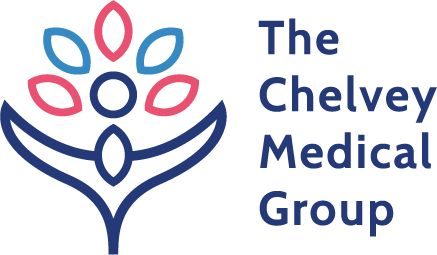Premature Ovarian Insufficiency
Premature ovarian insufficiency (POI) is the term used when a woman goes through the menopause under the age of 40.
Menopause is officially one year after our last period but the transition happens when our ovaries stop producing an egg every month. As a result of this our levels of oestrogen (and progesterone) fluctuate dramatically and ultimately fall to low levels which can cause symptoms such as hot flushes and fatigue. This process happens earlier in life in women experiencing POI or early menopause.
What does this mean for my fertility?
Unlike menopause later in life, in women with POI the ovaries may not stop working completely and women may still have infrequent ovarian activity which could lead to ovulation (release of an egg). These sporadic cycles can lead to pregnancy in around 5-10% of women with POI. As such whilst fertility is lower in women with POI it is not lost completely for every woman and discussing pregnancy and/or contraception needs is an important part of managing POI.
We have a fertility expert attached to our clinic who will be able to provide further advice in this area. If this is something you wish to explore please email hello@thechelvey.com
What causes POI?
In the vast majority of women with POI no cause is found and this is called idiopathic POI.
Other causes include:
Surgical some women may have their ovaries removed at an early age which will immediately induce menopause. This may be done for various reasons eg. as part of risk reducing surgery for a genetic risk factor (eg BRCA), in endometriosis, cancer treatment or as management for PMDD.
This is not technically POI as the ovaries are not prematurely insufficient- they have been removed-and there can therefore be no chance of sporadic egg release and pregnancy. But the risks associated with POI are the same and must be carefully discussed and correctly managed to protect a woman’s future health.
Women who have had a hysterectomy at an early age, even if their ovaries have not been removed, are more likely to develop POI.
Medical radiotherapy to the pelvis or chemotherapy for cancer may induce POI- though in some incidences this is temporary and women may start menstruating again sometime after their cancer treatment has finished.
Autoimmune this is the cause in around 1 in 20 women with POI. Autoimmune disorders occur when the body’s natural defence system can’t tell the difference between your own cells and foreign cells and mistakenly attacks normal cells.
Examples of common autoimmune disorders are rheumatoid arthritis, type 1 diabetes and some forms thyroid disease.
Genetic much less commonly there may be a genetic cause. A strong family history of POI and POI at a very young age makes this more likely. The most frequently found genetic problem is Turner’s Syndrome which is when one of woman’s two X chromosomes is missing.
How do we diagnose POI?
POI is one of the few times when we use a blood test to aid diagnosis of the menopause (unless the ovaries have been removed). The blood test is to check the levels of follicle stimulating hormone (FSH) which increase towards the menopause in a last bid to try and stimulate the ovaries to produce an egg. The raised FSH can be picked up in the blood. We would use two raised levels of FSH 6 weeks apart in order to make the diagnosis. These bloods tests would be taken into account along with physical symptoms and menstrual cycle changes.
Symptoms are widely variable (as they are in menopause at an older age) and whilst some women may experience more severe symptoms (particularly if surgically induced menopause) a number of women with POI may have few to no symptoms at all and may only notice a change in their menstrual cycle.
It is important that if you notice a sustained change in your menstrual cycle over several months that you contact your doctor to discuss this further.
If you are diagnosed with POI you may be referred for additional tests to look for an underlying cause.
Anti-mullarian hormone (AMH)
Females are born with a finite number of eggs in their ovaries. This number actually stars to decline around puberty with a dramatic decrease in eggs from the age of 35. AMH is a hormone produced by the eggs in the ovary. As such a reduced number of eggs in the ovary will lead to a lower level of AMH and this has been used as a marker of ovarian reserve. There is research being done around the use of AMH in predicting and diagnosing menopause but this test is not currently available on the NHS and its use in this setting has not yet been confirmed.
What are the symptoms of POI?
As mentioned above the symptoms are widely variable in type and severity, and some women may only notice menstrual irregularity or absence. If POI is caused by a chromosomal abnormality (as in Turners syndrome) then the hormone fluctuations that cause many of the menopausal symptoms may not occur and thus symptoms are much less likely.
Physical:
- hot flushes
- joint pains
- vaginal dryness, burning, itching, soreness
- urinary incontinence
- recurrent urinary tract symptoms
- bladder pain
- dry hair and skin
- loss of concentration
- fatigue
- palpitations
- headaches
Psychological:
- low mood
- anxiety
- sleep disturbances
Why is it so important to diagnose POI?
POI is one of the situations where certainty of the diagnosis is essential due to the substantial implications for future health and fertility, and the potentially devastating psychological impact of a diagnosis of POI.
Psychological young women may struggle both with distressing thoughts around loss of oestrogen, and its association with ageing and loss of femininity in addition to the potential consequences for their fertility if they wish to have children in the future or add to their family. It can be hard to challenge social stereotypes attached to ageing and the menopause, which can add to a women’s distress.
Low hormone levels can cause problems with sexual function both psychologically and physically. Physically, the vagina changes in response to lower oestrogen levels. Libido may also drop with changes to hormone levels and in response to any negative thoughts around going through the menopause and the link to feeling a loss of sexuality.
Women often find it difficult to discuss a diagnosis of POI and its potential consequences with a partner or a friend as it is perhaps an unexpected conversation to have to have at a young age, particularly if, like most women with POI, there is no explanation which can make the diagnosis harder to come to terms with. Consequently women can feel very lonely and can struggle to cope following a diagnosis. Women commonly express feelings of guilt attached to fertility and POI and can feel hopeless about the future. Providing psychological support is vital in the management of this condition.
Physical a diagnosis of POI has a significant impact on a woman’s future health and it should be approached in a different way from menopause at an older age. There are substantial additional risks that should be carefully discussed and managed, preferebly by a specialist with experience in managing the menopause.
Osteoporosis- oestrogen helps to keep our bones strong and healthy and a loss of this hormone around the menopause leads to accelerated bone loss and dramatically increases the risk of osteoporosis. Osteoporosis is when the bones have become weaker and thinner and are more likely to fracture and break without much trauma. The risk of osteoporosis is hugely increased in women with POI if oestrogen is not replaced.
Cardiovascular disease- this term encompasses the damage to blood vessels around our body- most notably in our hearts and brains. Oestrogen helps to keep our blood vessels healthy and flexible and subsequently the risk of heart disease and stroke in particular, increases after the menopause as oestrogen levels fall. Again making sure that these additional risks are understood and discussed following a diagnosis of POI is vitally important.
Other considerations:
Vaginal symptoms and psychosexual health- there are oestrogen receptors all over the body including in the bladder and vagina. Falling levels of oestrogen can cause symptoms of vaginal dryness and irritation, painful intercourse and recurrent urinary tract infections.
Lower levels of testosterone and oestrogen can interfere with libido and sexual function in addition to vaginal symptoms. The symptoms of testosterone deficiency can be much more marked in women who have had a surgical menopause from having their ovaries removed.
In addition to this, as the levels of oestrogen in the body fall the womb can become smaller and much less able to accommodate a pregnancy. It is important to discuss fertility needs as part of managing POI, as giving hormones back may help to keep the womb healthy and more likely to support a pregnancy if this is desirable.
Management
Providing up to date, easily accessible information and support for women is paramount to managing POI.
Replacing oestrogen with HRT in women with POI is strongly recommended at least up until the average age of menopause (51) regardless of symptoms severity, in order to protect against osteoporosis and cardiovascular disease. It is important to mention that research has shown that the risks associated with HRT in older women (over the age of 50) do not apply to women taking HRT before this age as HRT is simply replacing hormones that would usually be present were it not for POI.
HRT
For more information on HRT options please see our HRT section
Women with POI often require higher doses of oestrogen than women experiencing menopause later in life and may often require testosterone in addition to oestrogen which may be prescribed by a specialist.
Testosterone
this is currently not licensed in the UK and can usually needs to be prescribed in a specialist setting.
Topical oestrogen
Topical oestrogen can improve vaginal and vulval dryness and irritation.
CBT
It is common to feel overwhelmed and anxious following a diagnosis of POI and some women may also experience low mood. Cognitive Behavioural Therapy is a form of talking therapy that helps to reframe the way we think about things and can be incredibly helpful in coming to terms with a difficult diagnosis such as POI.
Diet and lifestyle
Healthy living has a hugely positive effect on the body and can completely transform risk profile in terms of bone and cardiovascular health going forwards. Stopping smoking, reducing alcohol, exercising regularly and eating a healthy balanced diet rich in calcium not only improves risk factors around the menopause, but has a positive impact on mental health and overall symptoms.
DEXA scan
A DEXA scan given information about how thick or thin our bones are. It is vitally important that all women diagnosed with POI have a DEXA scan as a baseline and at intervals following treatment to monitor their bone health.
patient
feedback

“I can honestly say I felt completely seen and heard”
“I felt you took the time to ask me questions and truly listen which entirely validated my experience and feelings”
“Very clear in her explanations and listened to my concerns. I felt very reassured that a plan is in place”
“Thank you so much for your care and attention”


